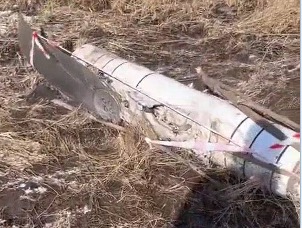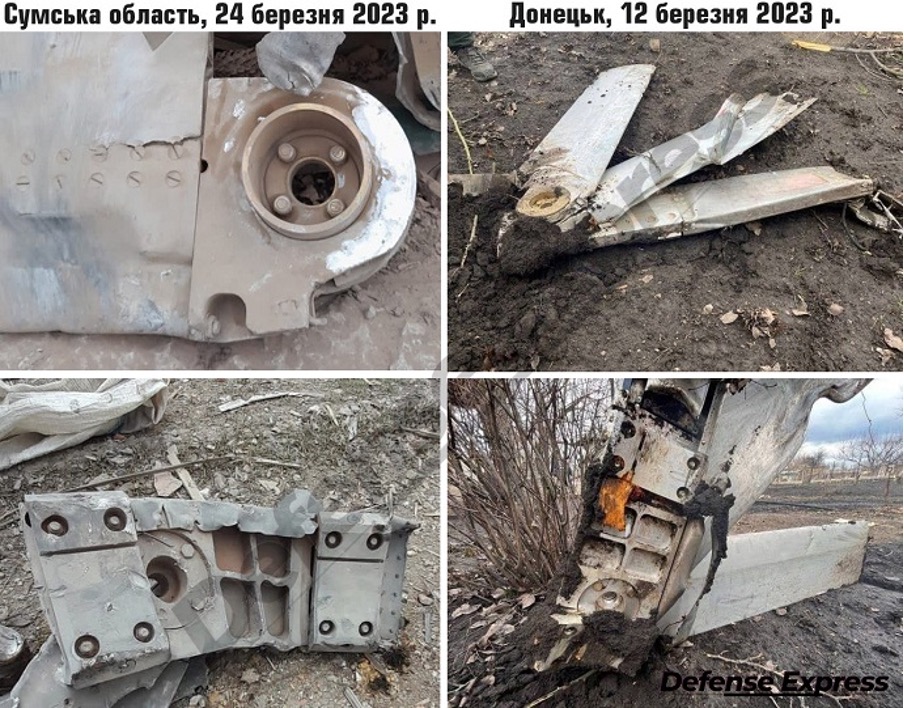On 24 March 2023, ten Su-35Ss, the Russian Air Force’s most advanced fighter, conducted a bombing raid against several border settlements in Sumy province. The attack was not just notable for the number of aircraft involved. It was also the first reported mass use of glide bombs in the war and confirmed two earlier reports that this bomb type had made its debut in the conflict. Ukrainian Air Force spokesman Colonel Yuriy Ignat described the development as ‘an extremely big threat’.
This article examines the development of glide bombs by the Russian defence industry and what first use tells us about the threat they pose.
The development of Russian glide bombs
Russian glide bombs emerged only very recently as an evolution of guided bombs. In simple terms, a glide bomb is a stand-off weapon with flight controls which allow it to use a gliding flight path onto a target at a greater distance. These are the KAB‐1500 series of bombs developed by Tactical Missiles Corporation JSC (TMC JSC – more commonly known as KTRV), roughly equivalent to the Western (US) Mk84 bomb.1 KAB is korrektiruyemaya aviatsionnaya bomba or ‘adjustable aircraft bomb’. The guided bomb is the KAB‐1500Kr (Korrelacionnaya, correlated).
The derivative glide bomb variant is termed UPAB‐1500B‐E ((Upravlayemiya Planiruyushchaya Avia Bomba, ‘guided gliding aviation bomb’). It is also known as K029BE. The bomb has an atypical design. As Jane’s describes: ‘the aerodynamic design of the weapon is unusual as it employs a high‐aspect ratio small chord cruciform‐folding wing design, unique in contemporary glide bombs.’2 The bomb is fitted with an INS/GLONASS guidance system and boasts a reported Circular Error Probability (CEP) of 10m. It is claimed the UPAP-1500B-E can be launched from an altitude of 15km and a range of 50km. The bomb was only declared operational in 2019, but its first use was not confirmed before these attacks in March 2023.
There have been separate developments of glide bombs. In 2018, NPO Bazalt company, a subsidiary of Techmash, reported the production of a PBK-500U gliding cluster bomb with a claimed range of 30km. A glide variant of the FAB-500 M62 was also reported. In the same year, Russian defence sources said the production by KTRV of a guided bomb-missile weapon system (MC RVB) named Grom (‘Thunder’). One variant was claimed to boast a 120km range with a 315 kg high explosive warhead. A second variant with a 480 kg high explosive warhead was reported with a 65km glide range. The Grom is not strictly a glide bomb but a hybrid guided bomb-missile with propulsion and glide characteristics.

The first attacks
The first recorded attacks using glide bombs took place overnight on 11-12 March 2023. Two bomb-missile types were used, likely launched by two different platforms, but these have not been reliably identified.
On 12 March, imagery appeared of a novel bomb-missile used in an attack on Avdiivka. The device had malfunctioned and was identified as a Grom. Given the reported 65km – 120km range, the launching aircraft may have been airborne over southern Russian airspace. Russian sources state the Su-34 is certified to launch Grom.

A second attack was subsequently recorded in Donetsk province on the same day. This bomb also malfunctioned and was identified as a FAB-500 M62. The device had landed in the Kuibyshevsky district of Donetsk City in what appeared to be a garden. A guidance kit was found 500 metres from the bomb. Russian defence reporting had indicated delivery of this bomb as early as January 2023, but this was the first recorded use. This bomb has a reported range of 30km. The launching aircraft was probably airborne over Donetsk province. A Su-24M tactical bomber may have launched the bomb.
The 24 March attack
This raid was launched at night. Ten Su-35Ss participated and Ukrainian authorities reported as many as 11 glide bombs. A Kh-31P anti-radar missile was also launched, leading to speculation in Russian defence media that the targets were a Western-supplied air defence system and associated missile storage sites.
As many as four border settlements were struck in a line from Vyrky to Mykolaivka, a distance of around 50 km. One of the bombs hit a residential building in Billopolya. A YouTube video shows massive damage and would be compatible with a 1500-class bomb. Two people were killed, and ten were injured. The targeted settlements are only 10-15km from the Russian border. Launching aircraft would have been comfortably outside the range of Ukrainian air defence systems over central Russian airspace.
Tentative conclusions
Some caution should be exercised with the reported use of new weapons. Guided and glided bombs can be confused and may have been in these attacks. Nonetheless, the imagery evidence does show glide bomb features and in the case of the Grom that malfunctioned, the evidence is uncontroversial. The advantage of gliding munitions is obvious: they are significantly cheaper than cruise or ballistic missiles while providing comparable accuracy and good range. Russian missile stocks are depleted considerably. More affordable precision weapon options are needed urgently. The report of US-supplied JDAM-ER bombs to the Ukrainian Air Force may have provoked the Russian response.

The malfunctions suggest Russian defence industry still has work to refine the designs. Even so, Colonel Ignat is right. Ukrainian air defenders have no answer to glide bombs launched from the sanctuary of Russian air space. This is a far more serious threat than Iranian kamikaze drones.
Sergio Miller
Sergio Miller is a retired British Army Intelligence Corps officer. He was a regular contributor and book reviewer forBritish Army Review. He is the author of a two-part history of the Vietnam War (Osprey/Bloomsbury) and is currently drafting a history of the Russian invasion of Ukraine.




